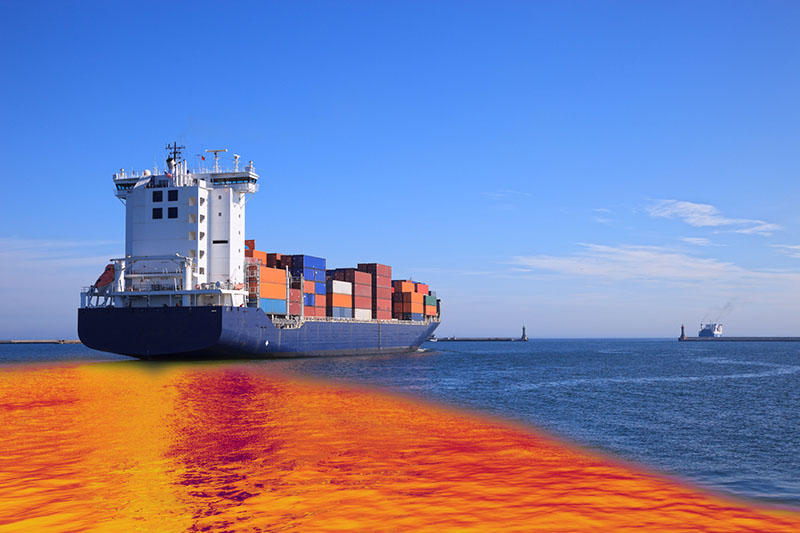![]() Editor’s Note: Klaus Lysdal is vice president of operations at iContainers
Editor’s Note: Klaus Lysdal is vice president of operations at iContainers
Come January 2020, the shipping industry will reign in a new era of maritime shipping and take a major leap towards environmental commitment.
Given that the industry remains well behind others with regards to environmental considerations, IMO 2020 is an opportunity for the shipping industry to finally play its part in reducing pollution.
From conception to implementation, the execution of IMO 2020 has taken 12 long and arduous years. This exposes the underlying inefficiencies and complexities of the industry, which are factors that have been hindering the industry from enacting progressive emissions-reducing measures in the decades prior.
The unattractiveness of green
Being environmentally friendly has long been a selling tool in many industries. Unfortunately, the same cannot be said for shipping, which has yet to see it as an added value.
This sad truth isn't particularly surprising.
Environmental measures on its own are already difficult to enact. But with 174 member states in the IMO, this is even more challenging for maritime shipping. The number of players involved in negotiations make the process extremely daunting and with Herculean political and legal hurdles to overcome.
Arriving at a global consensus is nowhere near as straightforward as agreeing and ratifying. The first step requires acknowledging that change is needed. But between that and enforcement lie many tedious steps including agreeing to make a change, deciding how it should be changed, and determining when it can be feasibly implemented.
Each of these steps requires lengthy research, discussions, decisions, and negotiations across numerous entities before it can move forward.
Challenges of commitment
Red tape and bureaucracy aside, one other challenge lies in finding a less-polluting alternative that has enough potential to power the massive shipping industry.
Much has been spoken about green technology and it very well may be the way forward. Already, we are already seeing its adoption on a local and smaller scale with certain terminals experimenting with solar-powered electric vehicles to transport containers.
But we must tread carefully before proceeding as it is easy and tempting to fall prey to the fanfare of a new product or technology without fully understanding it.
Electric cars have been hyped for their fuel efficiency and environmental benefits. But studies have refuted these claims by arguing that over the course of an electric vehicle's lifespan, including production and disposal, they end up polluting more than an average gas vehicle.
As it stands, electric battery-powered ferries, hydrogen technologies, and wind-assisted propulsion such as sail are being floated as possible green alternatives for maritime shipping. But some of these technologies are currently at too early a stage to their potential to really show.
Given the current battery capabilities, electric models may be far from being feasible and applicable to shipping. Who knows, maybe it will be a brand new technology, advancements within current technologies or a hybrid combination of, for example, the best of solar, cleaner fuel types, and water propulsion that finally does the trick.

Better late than never
The maritime industry's commitment to the environment has come relatively late. But as the old saying goes: better late than never.
Slowly, but surely, our mindsets are changing and a change of attitude is sweeping across the industry. In the last few years, we have seen more steps taken by the carriers to show a more environmentally conscious approach, which is a positive sign.
But more can certainly be done. The key lies in how industry players can be incentivized to go above and beyond meeting a regulation's minimum requirements.
As the regulatory body, the IMO has an immense role to play. It will have to keep up the pressure to perpetuate progress. No longer can the industry hold a wait-and-see approach.
However challenging it may be, it is time incentives are introduced to spur change. Without immediate tangible impact and limited commercial value, it will be hard to motivate industry influencers to do so. Carriers, for example, will be unwilling to spend money and resources on cleaner forms of energy to reduce their environmental impact.
Forging the road ahead
Leaping ahead, the next big thing after IMO 2020 will be IMO 2050. Even though it's still some 30 years away, the same gruelling journey is to be expected — if not more.
That said, it should not deter our spirits and dissuade our efforts.
Technologically, the industry has come a long way over the past 30 years. As we move forward, we should get a clearer picture of the benefits each technology offers. This will allow us to select those with the most potential and the ability to facilitate negotiations.
And if we continue down this path of technological development and discovery, higher targets for 2050 could very well be attainable.
SC
MR


Latest Supply Chain News
- Despite American political environment, global geopolitical risks may be easing
- Joseph Esteves named CEO of SGS Maine Pointe
- Employees, employers hold divergent views on upskilling the workforce
- April manufacturing output slides after growing in March
- Q1 sees a solid finish with positive U.S.-bound import growth, notes S&P Global Market Intelligence
- More News
Latest Podcast

 Explore
Explore
Business Management News
- Joseph Esteves named CEO of SGS Maine Pointe
- Employees, employers hold divergent views on upskilling the workforce
- April manufacturing output slides after growing in March
- Q1 sees a solid finish with positive U.S.-bound import growth, notes S&P Global Market Intelligence
- 6 Questions With … Sandeep Bhide
- MIT CTL offering humanitarian logistics course
- More Business Management
Latest Business Management Resources

Subscribe

Supply Chain Management Review delivers the best industry content.

Editors’ Picks





